It was particularly apparent to me this year—perhaps because we were staying the night at a cabin or because it was exceedingly quiet and contemplative: we were ending the old year at exactly the same spot that we were beginning the new year. Obvious, right? But we don’t often think of starting over or being a ‘new you’ or taking a ‘leap of faith’ as happening from the exact same place as ‘old ways’ or being ‘stuck’ or even ‘routine and repeat.’ But I actually liked the idea.
Chris and I, along with our daughter Emily from Texas, ventured to Itasca State Park on New Year’s Eve. It was cloudy, foggy, and frozen as we drove north and west. We checked into our two-room cabin, complete with indoor plumbing, and rented a pair of snowshoes for Emily. There were only half a dozen people or so who had had the same idea as we did. After unpacking, we set out to snowshoe a loop called Dr. Roberts Trail, but even with map in hand, we promptly ‘got lost’ and took a trail we later figured out was the Ozawindib Trail. There was so much snow and frozen haze, closed-down log cabin buildings, and new-place-disorientation that it took us some time and exploring to ‘get our bearings.’ The trail we found ourselves on had been groomed for cross-country skiing with snowshoeing on the sides. It was so very quiet that the noise of the snowshoes on the crisp snow seemed loud.
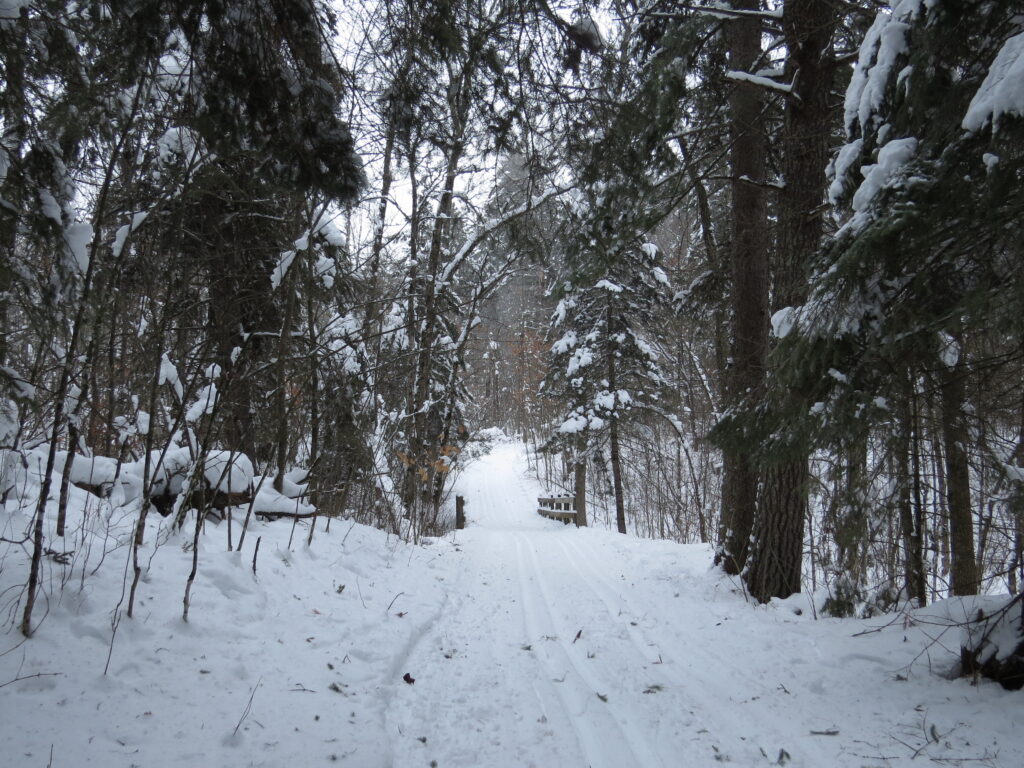
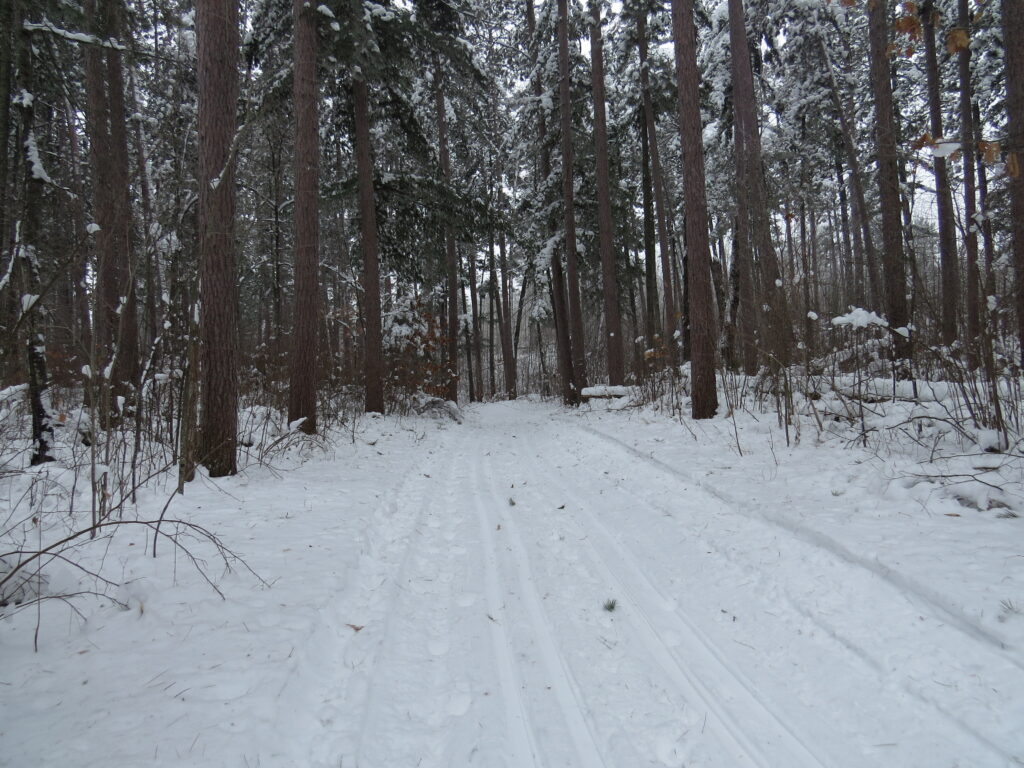
Itasca is the oldest state park in Minnesota (established in 1891) and protects over 32,500 acres of forests and lakes, including a large area of old-growth Red and White Pines. They have seen many decades of old years go and new years come in their long lives.
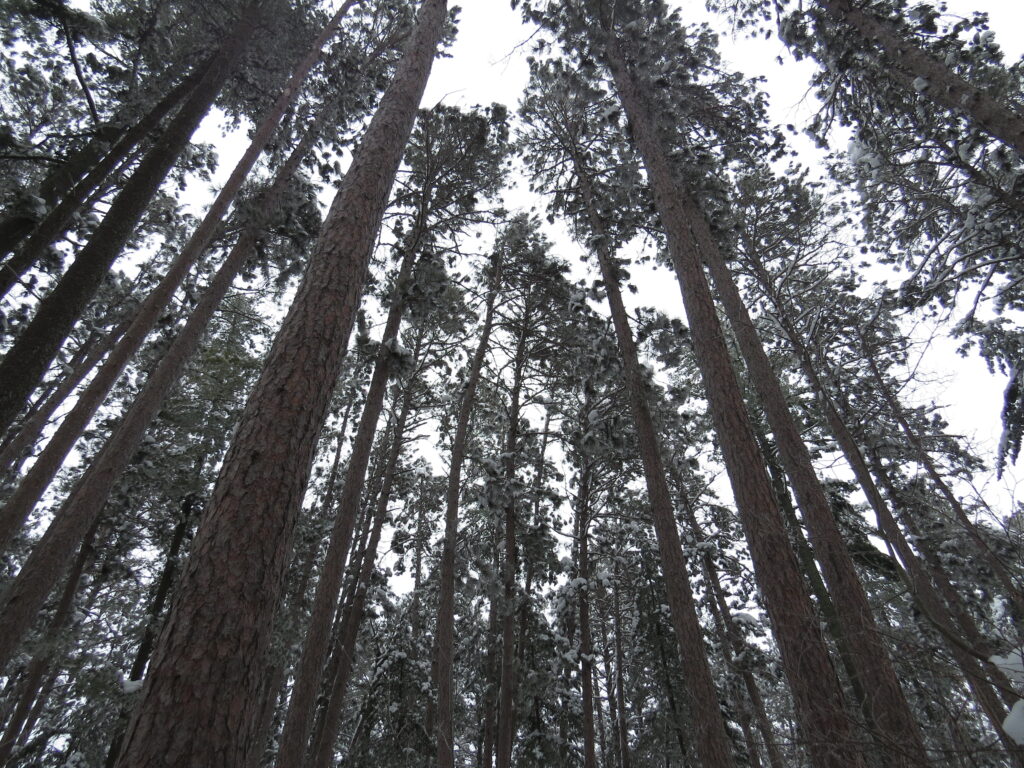
Even in the winter season, there is evidence of the sloughing of old ways—leaves, opened pine cones, and peeling birch bark—and the promise of new things to come—millions of tiny, protected buds of new growth.
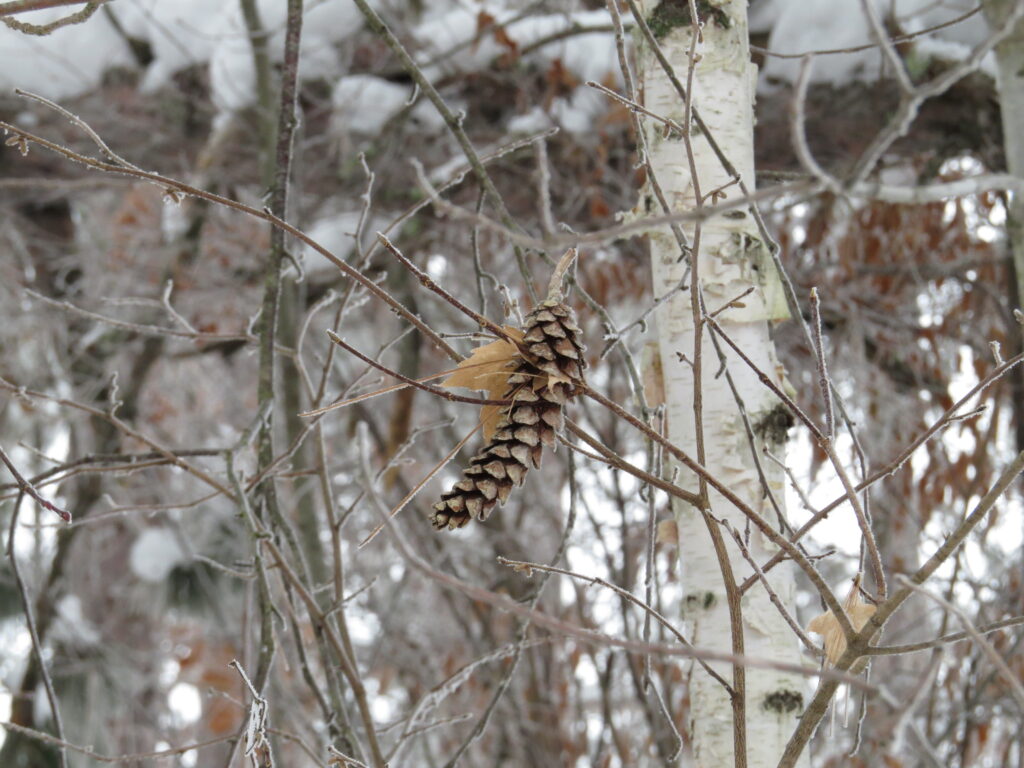
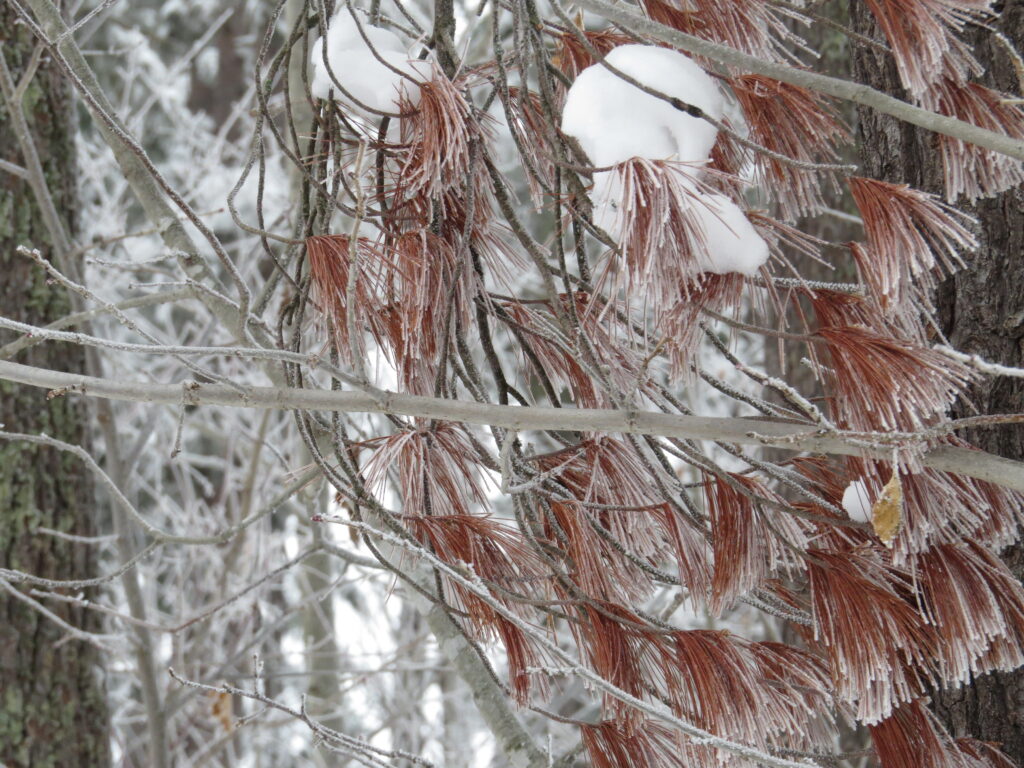
We trekked to a larger road closed to vehicle traffic for the winter, and there we discovered Mary Lake, which helped us get our bearings, find our place on the map, and turn around when we saw we were nowhere near Dr. Roberts Trail.
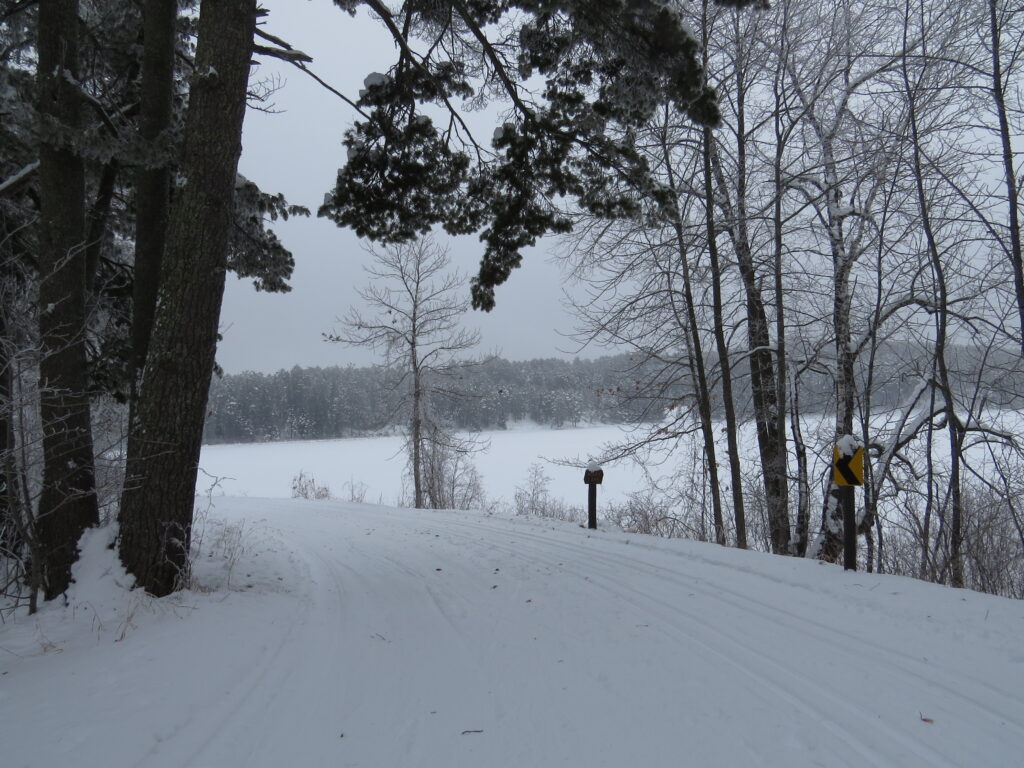
Old growth forests have been protected from catastrophic disturbances such as logging or forest fires for over a hundred years and provide a complex biodiversity of plants and animals in all stages of development—from new life to maturing to declining.
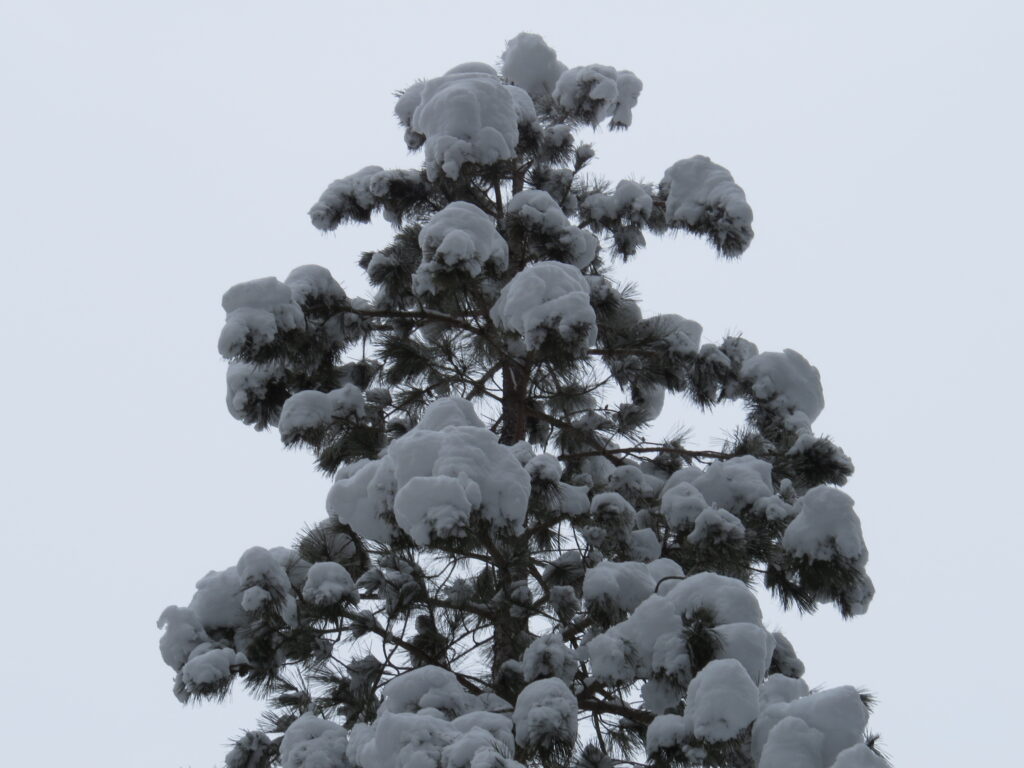
We snowshoed back to the empty lodge area and followed a road past the fish-cleaning house, under a walking bridge, to a parking lot with a huge tour boat docked on land for the winter. We walked out onto the lake ice that was covered with deep snow, confident in our safety when we saw the ice road, ice houses, and trucks of ice fishermen.
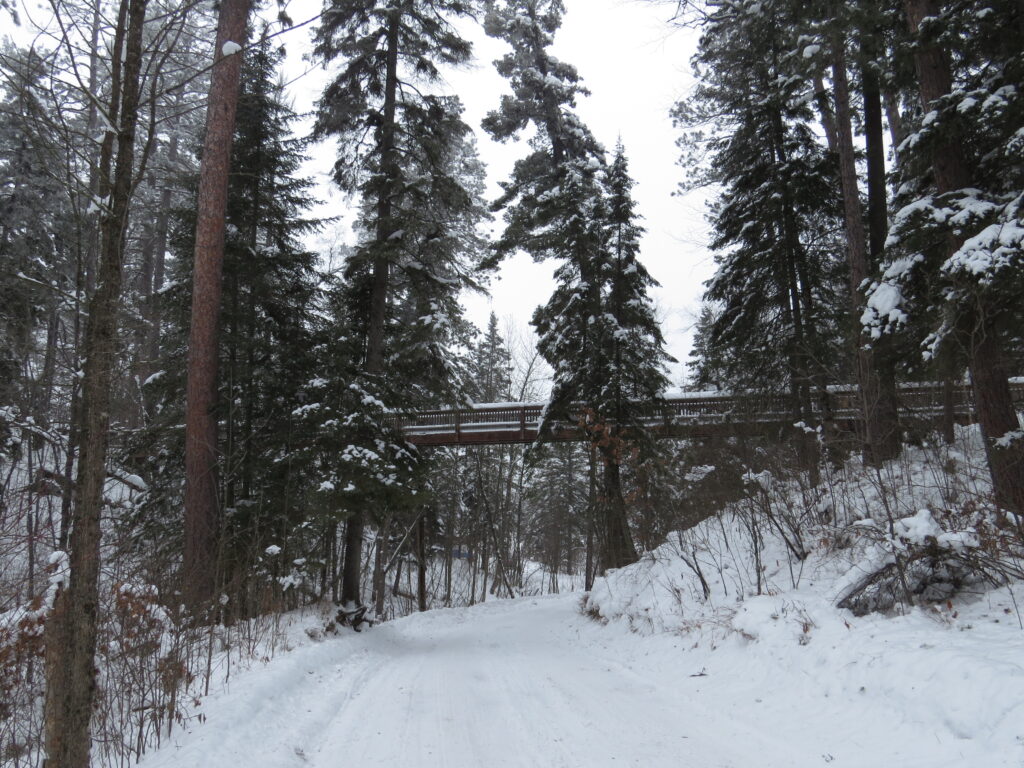
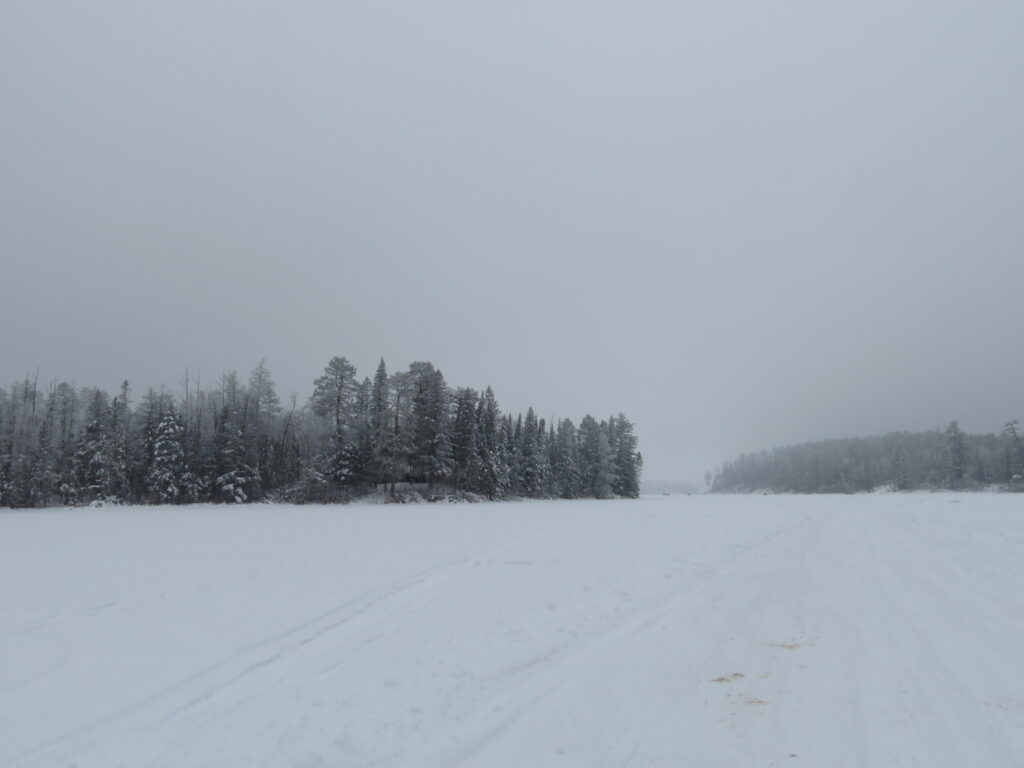
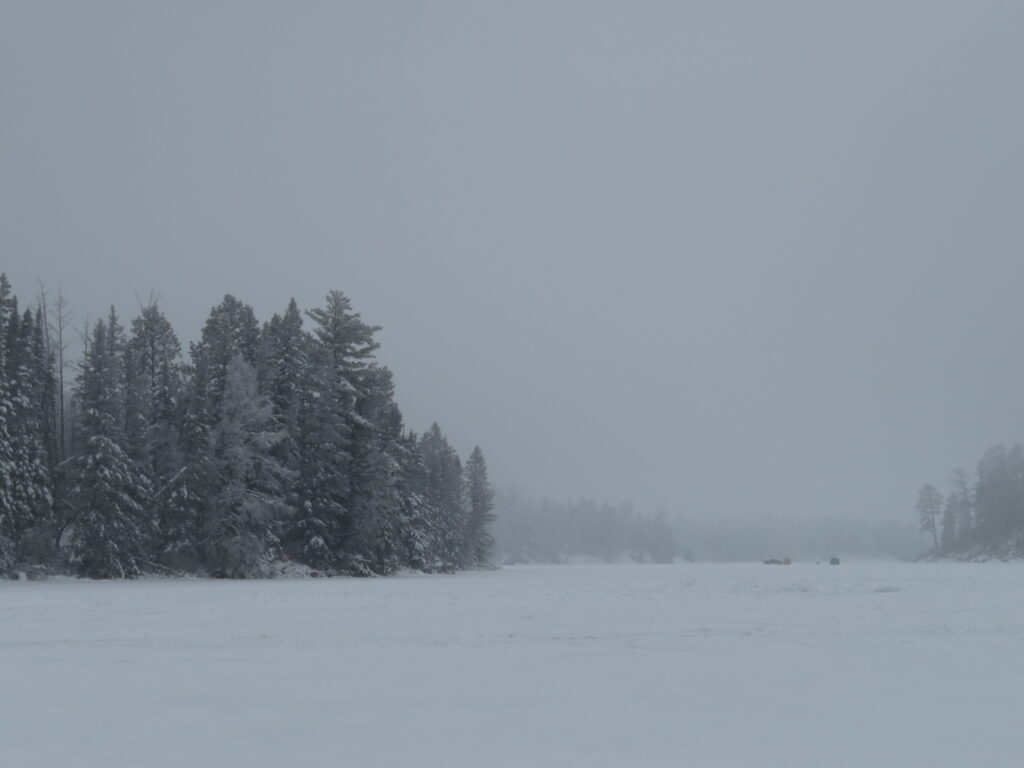
We climbed a hill up to the walking bridge where we joined the trees mid-height for a different perspective far above the ground and close up to a colorful Red Pine.
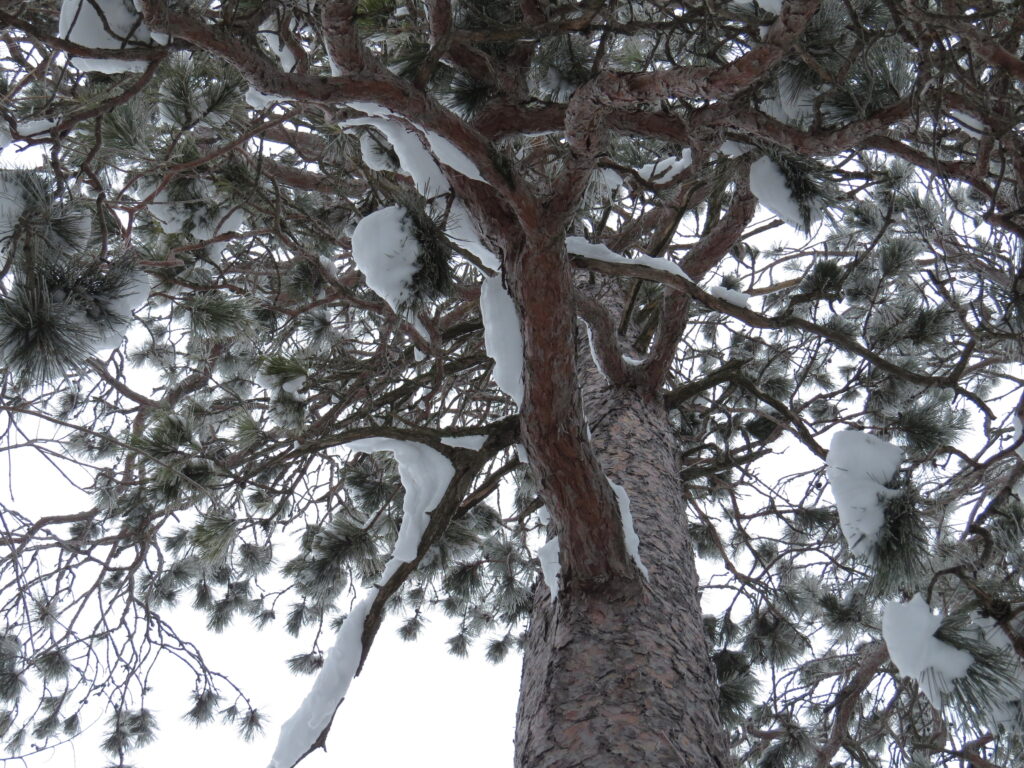
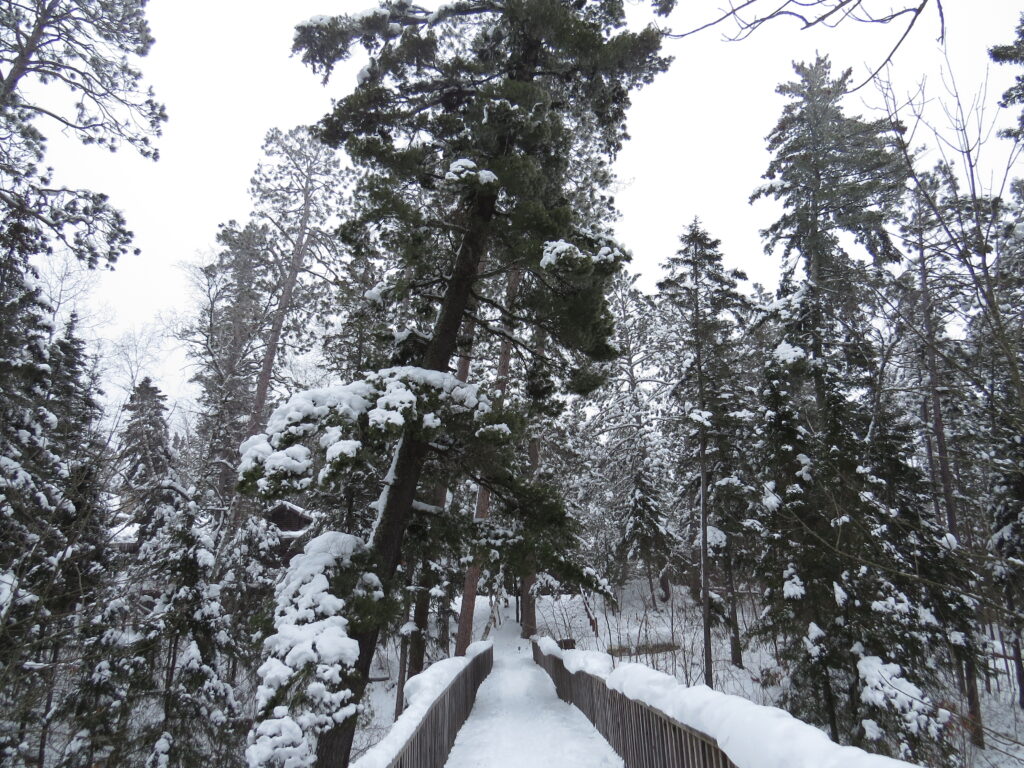
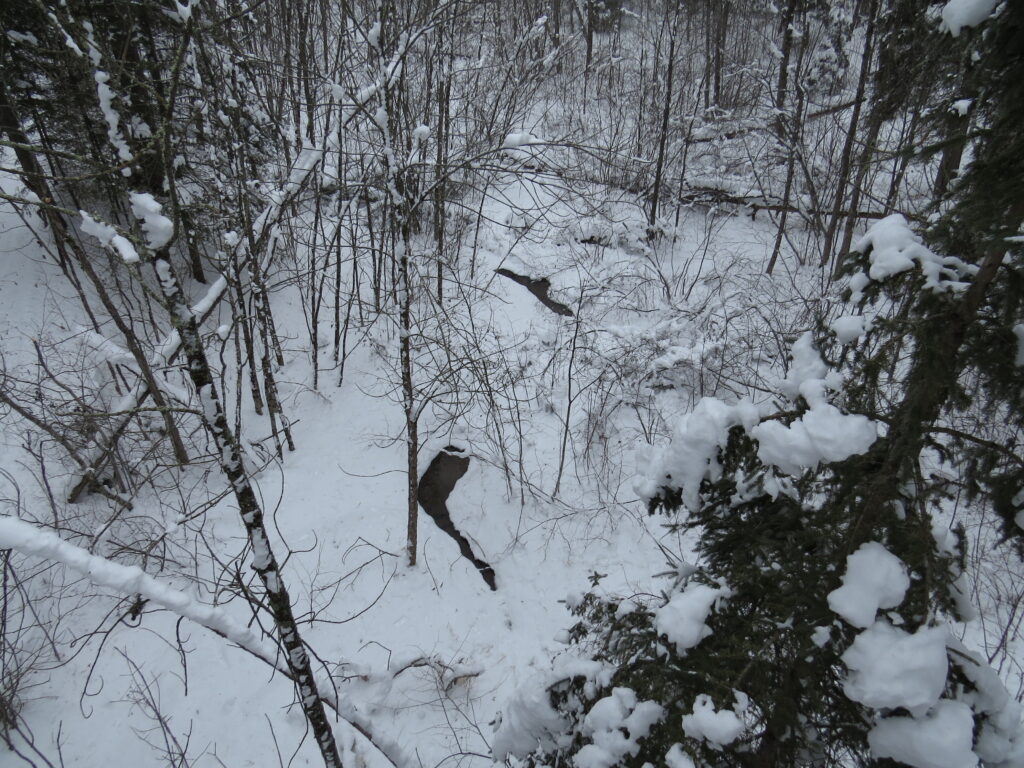
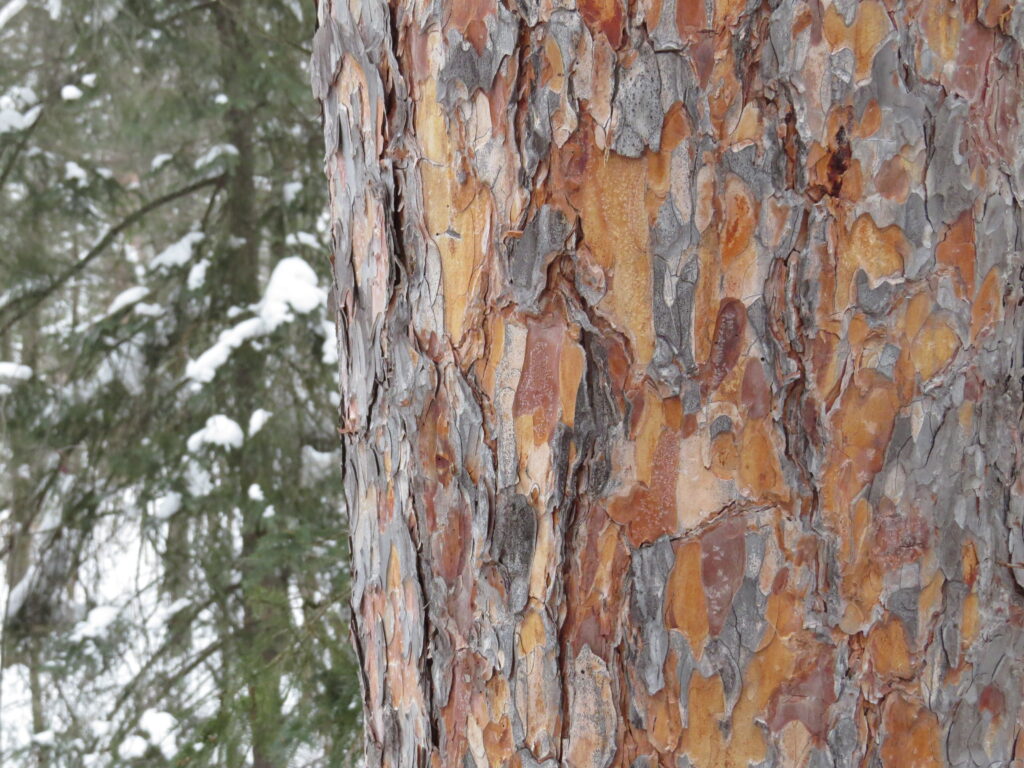
Our first snowshoe trek was orienting and invigorating as we explored our surroundings, but we also had plans for a luminous walk that evening. We returned to the cabin for a toasty crockpot supper, rest, and warmer clothes. The illuminated walk was three-quarters of a mile around the Bear Paw Campground. The only vestiges of a campground were the snow-piled picnic tables that were occasionally seen in the background of the strings of lights, but even those looked uncommon and foreign in the foggy, frozen landscape. One young couple with a small child was finishing up their walk when we arrived; otherwise, we had the place to ourselves. It was so incredibly quiet and still. We stopped at various points along the trail, suspending our talk and halting our crunching footsteps to soak in the silence. It was a bit disorienting to be in the dark, in the frozen fog, and in the noiseless forest, but as time passed, it became more comfortable and peaceful. From far away, the lights looked contiguous, but as we walked, we realized there were sections of light and sections of dark. The illuminated spots were light enough to get us through the dark places.
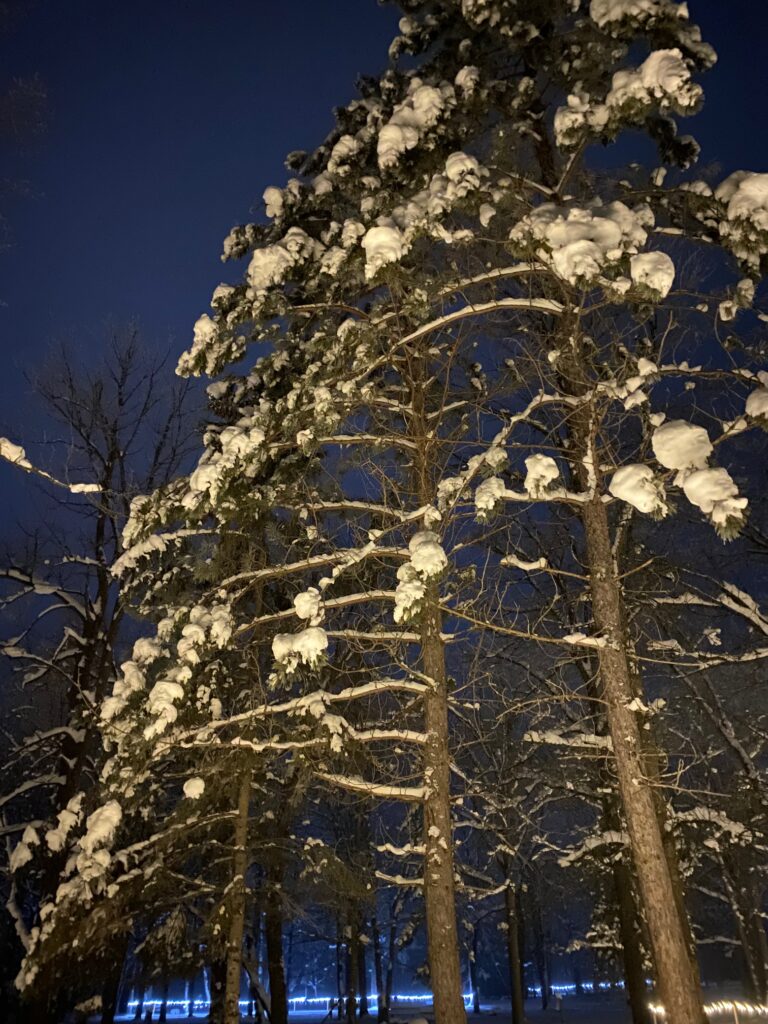
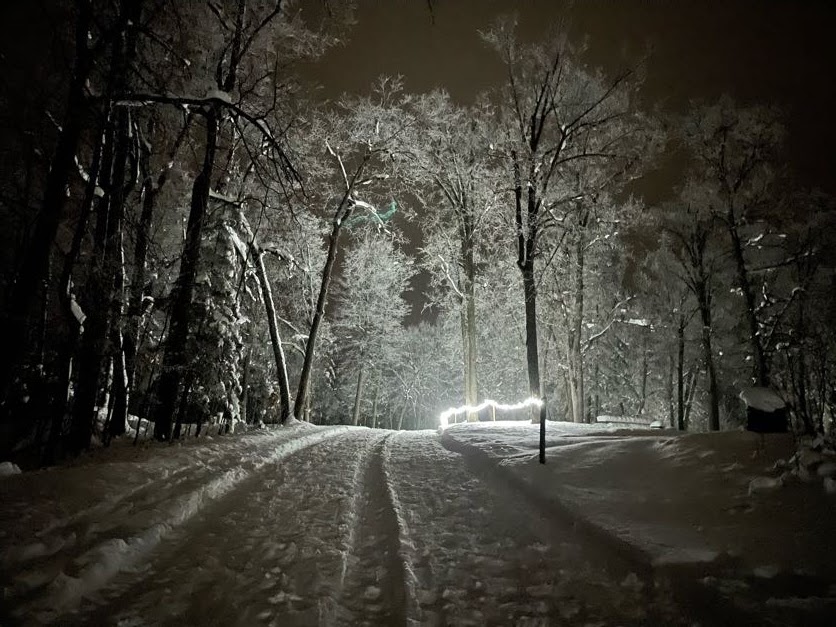
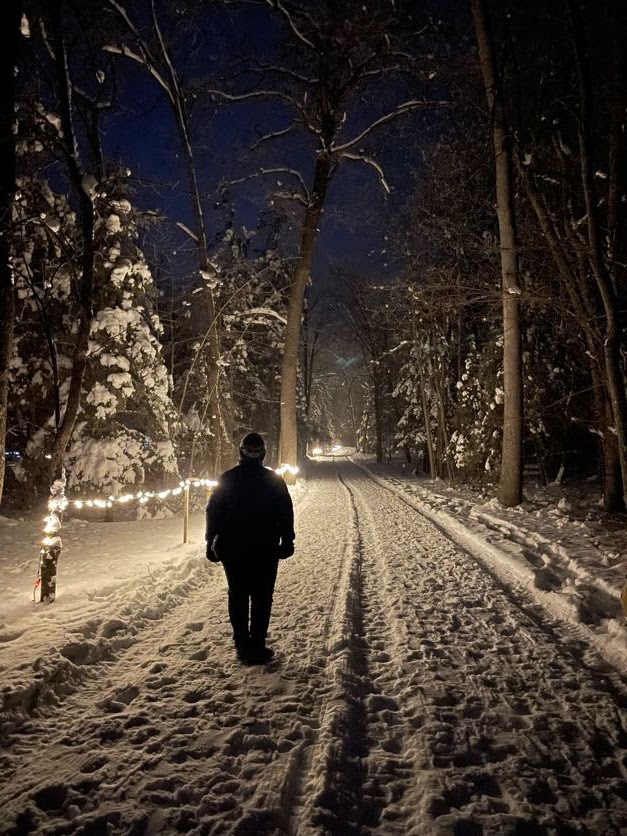
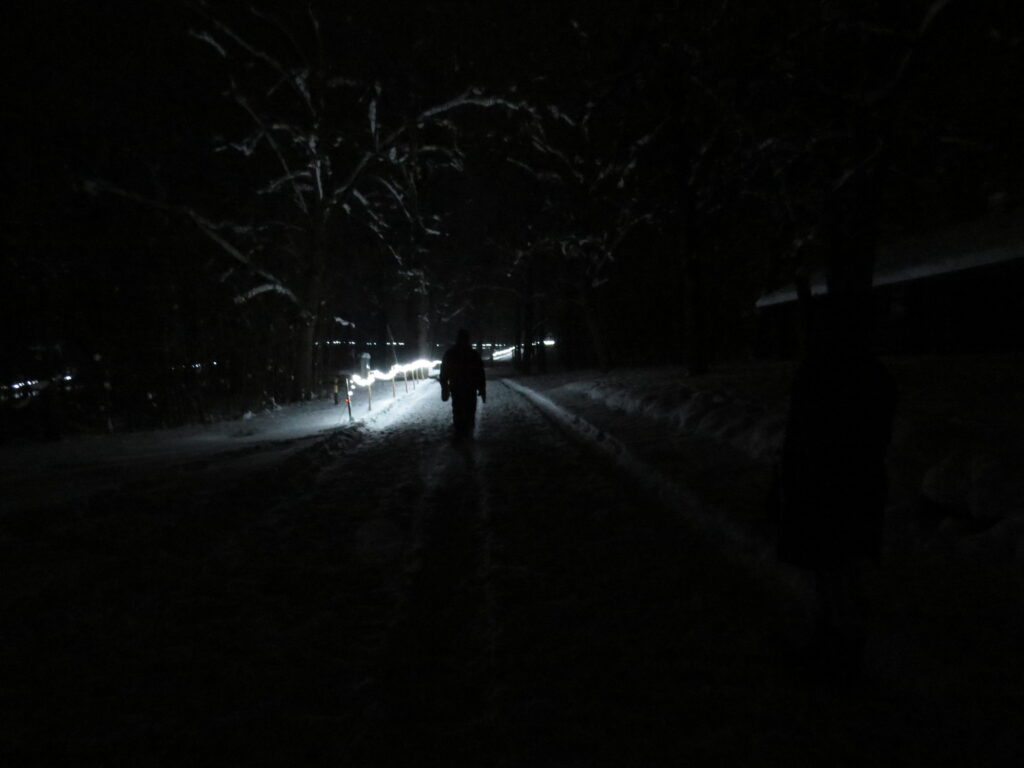
That’s how the old year was—stretches of grief, heartache, and worry, then periods illuminated with joy, fun, and laughter. The dark times came from death, illness, and disharmony, and much of the illumination came from our grown-up children spending time and energy with us. At the end of an old year, we can honor the past, whether we considered it difficult or wonderful, for in reality, it is both. It is helpful to explore our interior landscapes in order to get our bearings after a disorienting event. Seeking and soaking in the silence can mute the noisy self-talk that often undermines our well-being, and we can return to peace. Winter strips away many of the distractions—the noisy and beautiful distractions—that sweep us up in the rest of the year. Allow the illuminated times to get you through the dark spaces, and allow the quiet and beauty of Winter to bring you peace as you walk out of the old year.